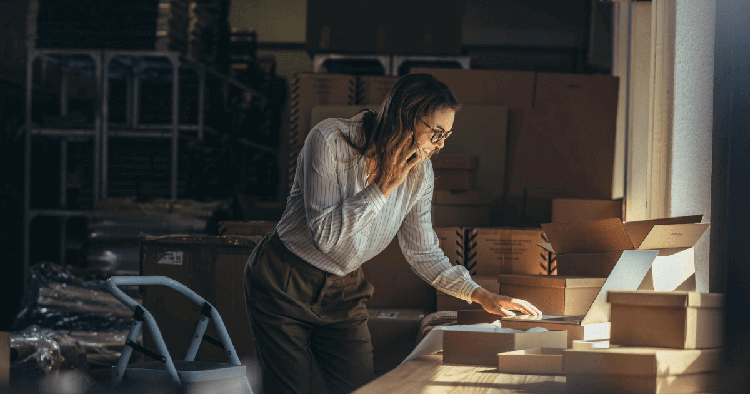What Is Last Mile Delivery? Costs & How to Optimize
May 26, 2020 11 min read
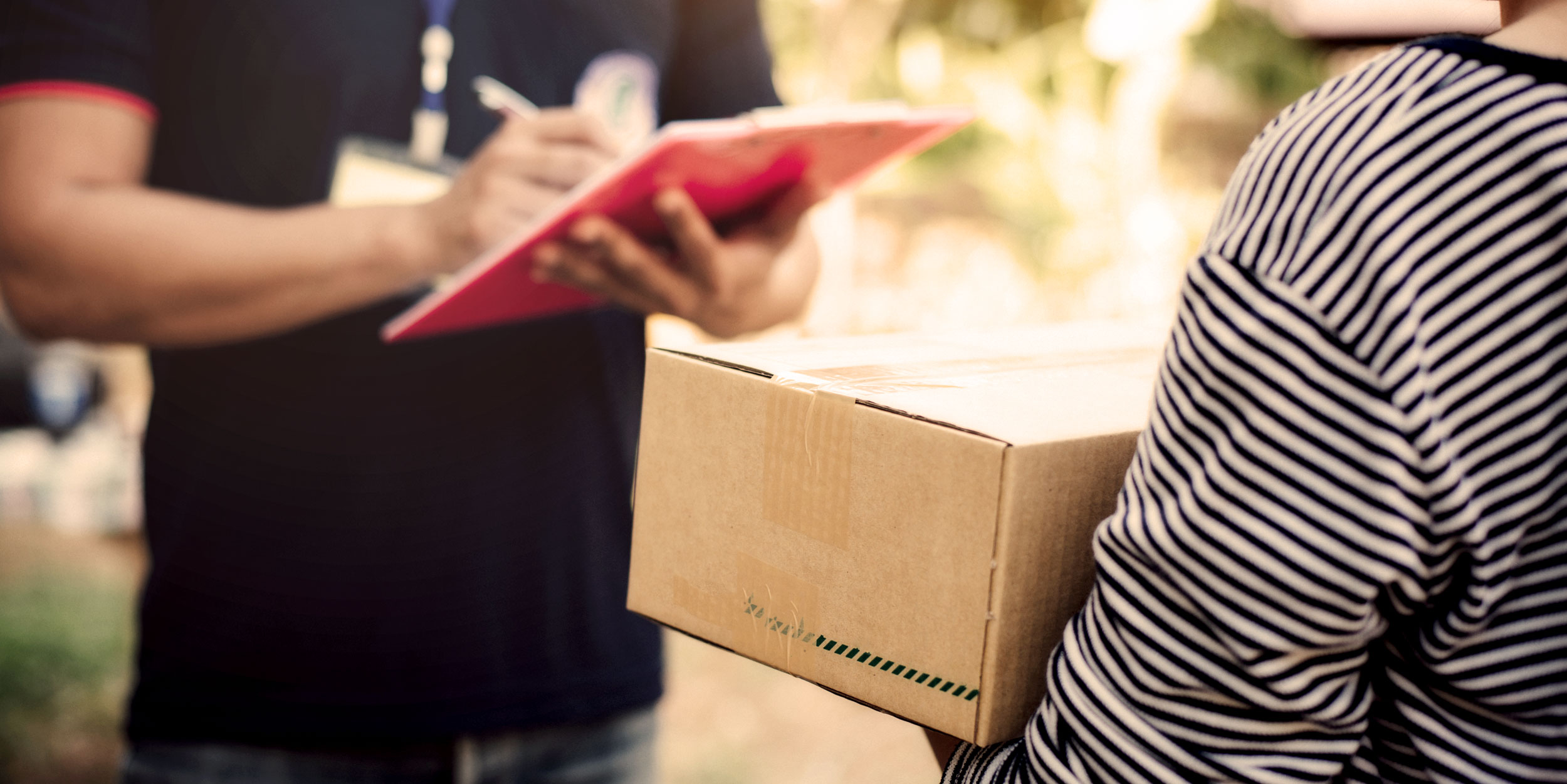
What Is Last Mile Delivery?
Last mile delivery, also known as last mile logistics, is the transportation of goods from a distribution hub to the final delivery destination — the door of the customer. The goal of last mile delivery logistics is to deliver the packages as affordably, quickly and accurately as possible.
Many retailers now focus on last mile logistics as a key differentiator, just look at how Amazon Prime has transformed online retail distribution.
But it’s not an easy thing.
The last mile of your product’s delivery accounts for more than 53% of the total shipping costs.
If you don’t optimize your process, inefficiencies can lead to prohibitive costs — driving your overhead through the roof and cutting into your business’ profits.
In this article, we’ll go over some of the challenges of last mile delivery and give you a complete guide to how you can optimize your process. We’ll outline exactly what last mile delivery is, why it can be so expensive, and give you solutions proven to work for businesses like yours.
Here’s what we’ll cover in this guide:
- What Is the Last Mile Delivery Problem?
- How Much Does Last Mile Delivery Cost?
- Why Is Last Mile Delivery So Expensive?
- The Real Business Impact of Poor Last Mile Delivery
- How Route Optimization Helps Solve the Last Mile Problem
- Real-World Examples of Businesses That Have Solved the Last Mile Delivery Problem
- Last Mile Delivery FAQ
What Is the Last Mile Delivery Problem?
Last mile delivery is the last step in moving your business’ product from your location (or transportation hub) to the end user’s location. The last mile delivery problem, then, is simply the fact that that last mile is usually the most expensive part of the process — often costing more than half of overall shipping costs.
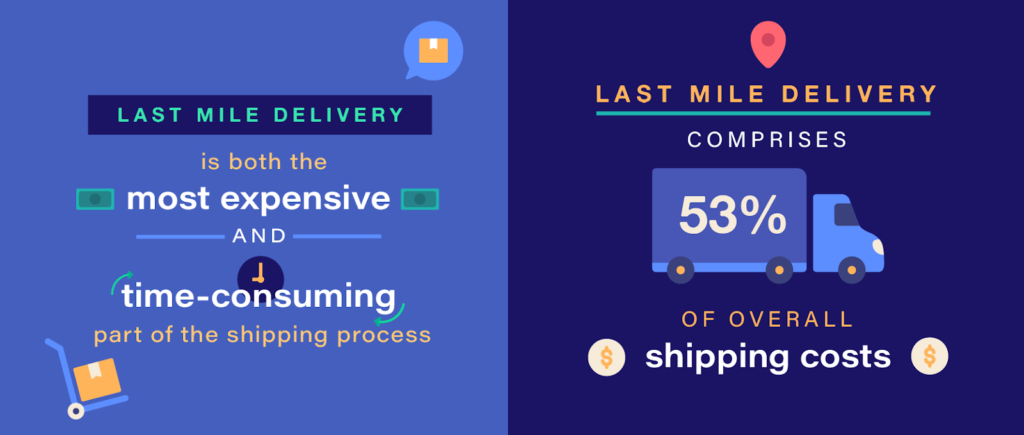
What makes last mile delivery such a challenge?
Unlike with large-scale shipping and dissemination, you’re not sending a large number of products to a single location.
Instead, your delivery drivers carry a large amount of smaller packages, each with unique destinations.
That is the essence of the last mile problem — more stops mean more complex routes, more idle time, and more time on the road. That means you have to maintain a larger fleet of delivery vehicles and drivers to ship a small number of products. Additionally, for some products you may have to offer inside delivery, which is another step that can further complicate the process.
What businesses are affected by the last mile delivery problem?
By definition, last mile delivery is relevant for businesses that deliver products directly to their consumers.
These businesses include (but aren’t limited to):
- Couriers
- Third-party logistics companies
- Direct-to-consumer model retail companies
- Food delivery companies
- Supermarkets offering delivery
- Department stores offering delivery
- Florists
- Restaurants offering delivery
- Pharmacies offering delivery
- Ecommerce
Even if your company collaborates with wholesalers or retailers in the supply chain of your product, you might have a website with an ecommerce store.
That means you still have to handle shipping, including last mile delivery, for the orders that come in that way.
How Much Does Last Mile Delivery Cost?
Last mile delivery is by far the most expensive part of the fulfillment chain, costing an average of $10.1 per package delivered. On average, businesses charge the consumer $8.08 to cover these costs, taking the rest from the profit margins of sold products.
Here’s a snapshot from Statista from 2018 (the last time they released data):
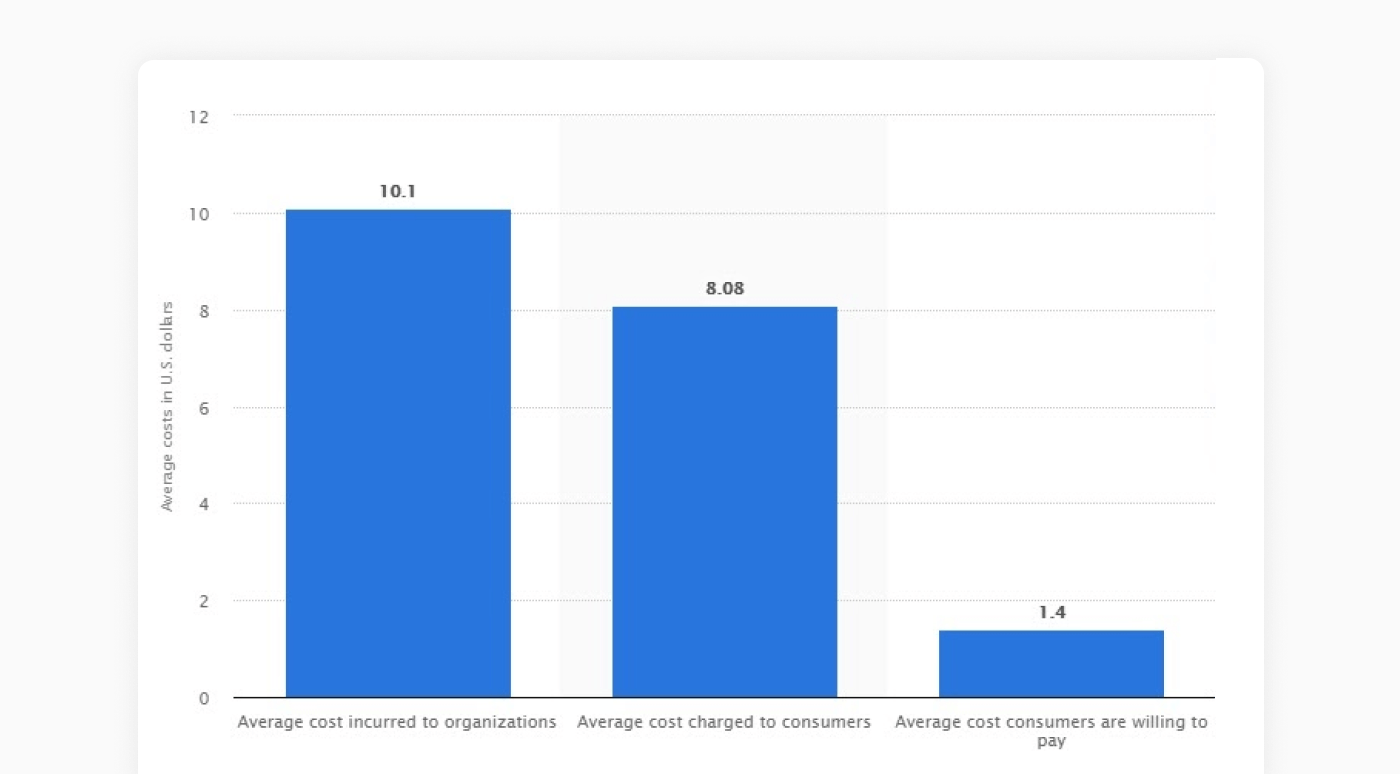
Given the vast majority of deliveries are small packages, these numbers reflect small parcels rather than large cargo.
Final mile delivery for larger items, such as refrigerators, ovens, and other electric appliances, can cost up to $50 per package.
But even if you only handle smaller packages, handling last mile deliveries can be expensive, if you don’t have scale on your side. The average salary of a delivery driver is $15.69 per hour. You also need to factor in other costs like warehousing, fuel, and vehicle maintenance.
If you’re taking a $2 hit (at minimum) from every delivery made, you can quickly feel the pain of the last mile delivery problem.
When considering these numbers, it’s clear that drivers need to average multiple deliveries per hour to keep your business growing.
Why Is Last Mile Delivery So Expensive?
Delivering thousands of packages to their final destination every day is a complex logistical challenge. Last mile fulfillment is complicated, and many factors contribute to the overall cost.
1. Lower average speeds = more time on the road, and fewer miles-per-gallon
When your drivers are delivering multiple packages to different locations around a city, they have to use local roads.
Smaller delivery trucks and vans average 6.5 miles per gallon (MPG) at a steady speed of 55 miles per hour. If you handle deliveries in urban areas, 55 mph is not a realistic average speed for your delivery fleet. How low it will drop depends on the local road and traffic situation.
The need to decelerate, stop, and accelerate at rapid intervals has a significant impact on both average speeds and fuel efficiency.
So not only do your drivers have to spend a lot more time on the road to cover the same distance, but it also costs you more in gas.
2. More stops lead to more idling and downtime
Driving and dropping off packages in the city leads to a lot more idling than other stages of shipping. With all the traffic lights, diverse vehicles on the road, and winding streets, it’s impossible to avoid.
On average, a delivery truck uses 0.84 gallons per hour when idling. Plus, you still have to pay your delivery drivers regardless of whether they are standing still or moving.
3. Failed deliveries
When you are distributing goods to fulfillment centers or supply chain partners, you don’t have to worry about failed deliveries.
When you are delivering products to the final customer, however, failed deliveries are a massive part of the equation.
A single failed delivery costs $17.78, on average, and an astounding 5% of all last mile deliveries fail. That’s why shipping accuracy is such an important thing to prioritize, especially in ecommerce shipping since the shipping experience is a critical customer touchpoint.
There are a number of reasons why this is such a big problem:
- The customer is not expecting a delivery (no prior notification).
- The customer is not home due to late delivery (inefficient planning or unexpected events).
- No options of delivery scheduling (no time windows).
- Mistaken address of the customer.
4. Complex routes lead to more out-of-route miles
With a large number of individual stops, it’s a lot easier for drivers to lose track of the route and rack up unnecessary miles.
Research shows that out-of-route miles can account for up to 10% of the total mileage of a delivery fleet.
5. Returns, refunds, or discounts
The average return rate of ecommerce products is a whopping 20%, which makes ecommerce fulfillment a particular challenge. If you sell consumer products online, you can expect at least one in five customers to send their purchased product back, either for a refund or for a different item (which you’ll have to deliver for free).
The Real Business Impact of the Last Mile Delivery Problem

If you don’t have an optimized retail distribution strategy for last mile delivery, you’re setting your business up to fail in the long term.
You will face significantly higher total costs, unhappy customers, and many other real business challenges.
Higher operating costs and lower profit margins
Higher rates of failed deliveries, unoptimized delivery route planning and schedules lead to significantly higher operating costs.
When just a single failed delivery can cost your business over $17, it’s essential to optimize every step of your order fulfillment process, especially last mile delivery.
Poor customer experience and little brand loyalty
Last mile delivery plays a significant role in the customer satisfaction of anyone who buys a product online.
Customers expect to receive their products on time, in acceptable condition. If you fail to deliver on these expectations, you will alienate customers and suffer from low repeat purchase rates.
84% of shoppers are unlikely to buy from a company again after a bad last mile delivery experience, and 98.1% of consumers say delivery is important for brand loyalty.
Increasingly, consumers expect same-day delivery (or at least next-day). And they don’t care how complex the delivery process needs to be to live up to that expectation. They just want the results.
More cancellations and returns
If a customer feels that you are taking too long to deliver the product they purchased, they are much more likely to cancel their order.
There is also a bigger chance that they will end up returning the product after having purchased an equivalent option at a brick and mortar store.
How Route Optimization Helps Solve the Last Mile Problem
You don’t need to invest in delivery robots, expensive technology, premium third-party logistics companies, or copy Amazon’s Prime program to solve your fulfillment issues.
Route optimization is a valuable type of last mile delivery software that can help you more efficiently manage your delivery fleet, increase your delivery capacity, and minimize failed deliveries — turning last mile logistics from a problem into a business asset.
What is route optimization?
Route optimization is the process of finding the shortest and most cost-efficient route to handle a list of deliveries. Since your driver’s routes typically involve a lot more than two points, finding the best route is a complex challenge.
Route optimization software helps your business consider all the variables and efficiently plan and schedule deliveries to your customers. It ensures your product gets delivered as quickly and inexpensively as possible.
To learn more about how route optimization can help your delivery business, check out “The Complete Guide to Route Optimization.”
Here’s a walkthrough of how route optimization software can help your business address the last mile delivery problem.
1. Realtime Order Tracking and automatic customer notifications
OptimoRoute’s route optimization software uses GPS-tracking to keep track of the live location of all drivers and packages.
So, instead of giving your customers vague ETAs, you can send them automated notifications with the real location of their delivery driver at that moment.
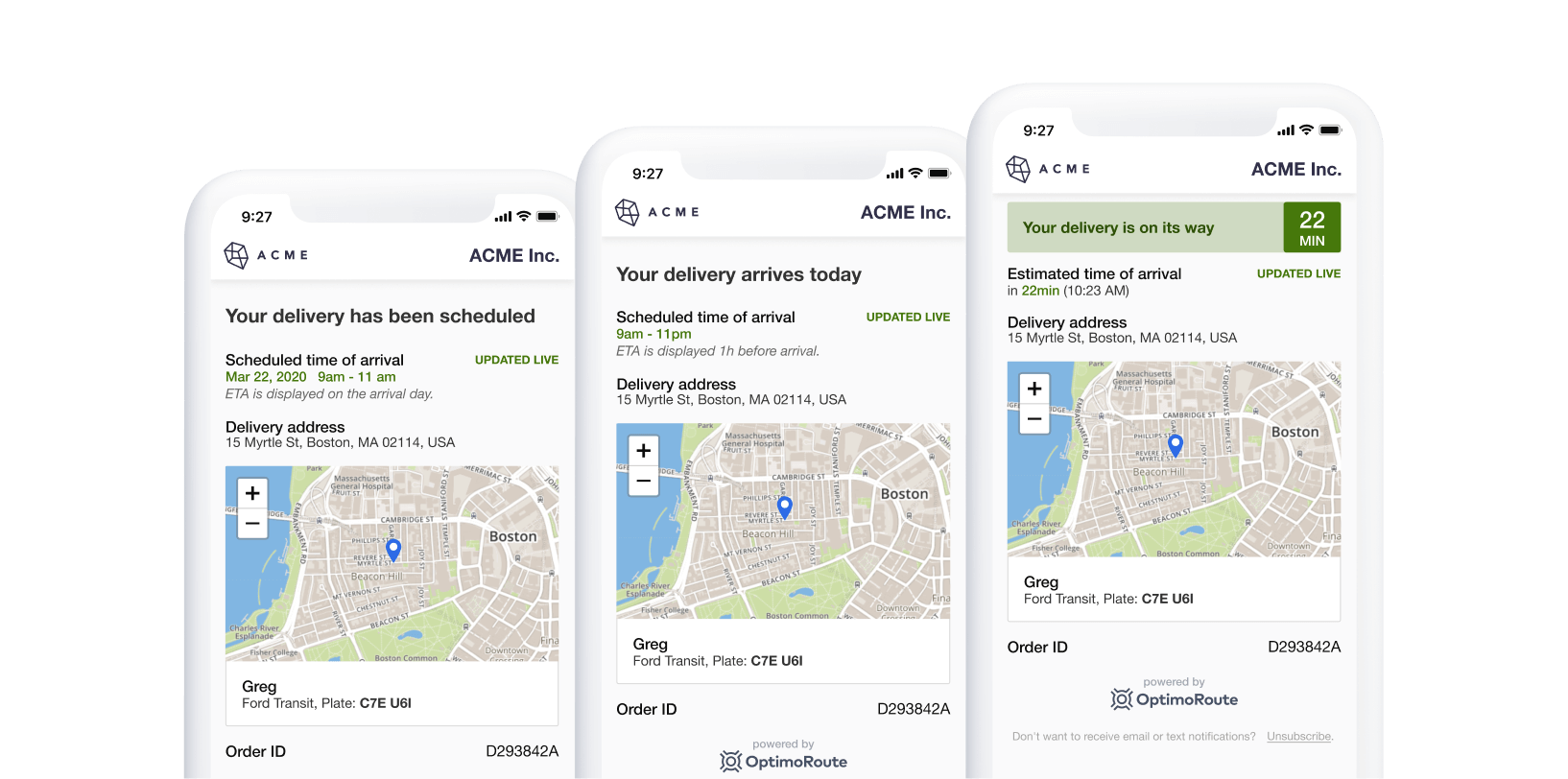
This real-time data will give your customers all the information they need. It will lower the chance of failed deliveries and eliminate customer service calls about parcel location.
2. Automated route planning that considers time windows and other constraints
A key challenge with route planning is all the different factors that a dispatcher or delivery manager has to consider.
With vehicle capacity, varying customer availability, vehicle capabilities (like refrigeration), driver schedules, and much more, It can be extremely time consuming (or even impossible) for a person to handle all the variables manually.
But OptimoRoute’s smart routing tools consider all these constraints and more. You can adjust for every conceivable factor without having to make time-consuming manual changes.
After setting these parameters at the driver and vehicle levels, you can simply import your order sheet as a CSV or Excel file.
3. Mobile app helps ensure live ETA tracking and fewer failed deliveries
The OptimoRoute mobile app for drivers ensures your drivers travel to the right addresses, at the right time, following the shortest possible route.
Not only that, but it tracks the location of all your drivers with real-time GPS data, and monitors order statuses and failed deliveries.
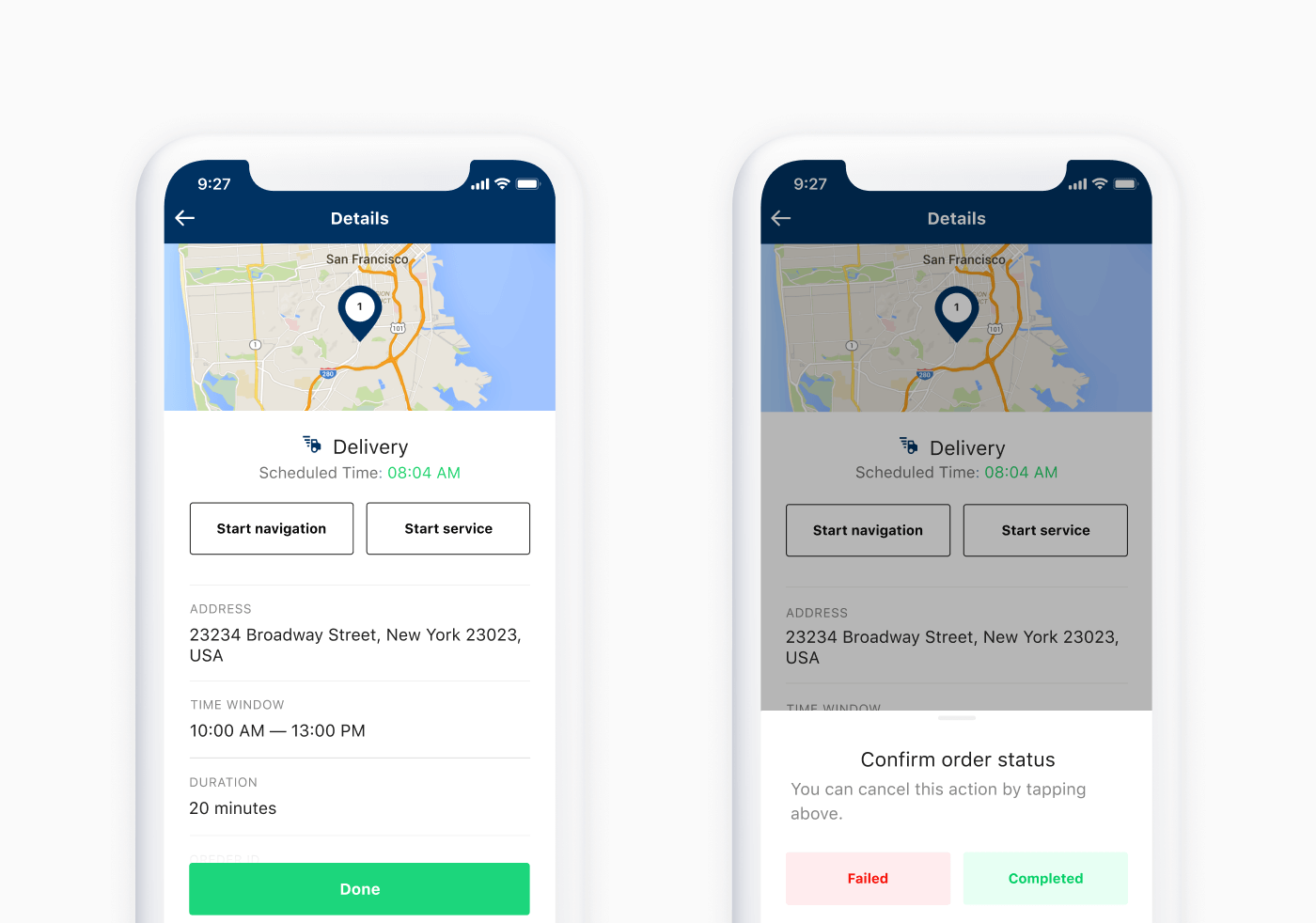
Your drivers will receive a prompt to confirm the order status after arriving at the delivery destination.
4. Much faster rerouting and scheduling on the fly
Planning your delivery routes will boost productivity, but adapting to changes in real-time can be difficult. What do you do when a driver calls in sick, or you get a batch of last-minute orders?
Trying to replan everything from scratch manually can take hours.
Failed deliveries can also be a huge problem for pre-planned delivery routes. One of the reasons they are so expensive is because most companies struggle with rerouting their delivery fleets in real time.
OptimoRoute’s dynamic replanning feature makes this a problem of the pasts. It automatically reroutes all deliveries based on current vehicle locations, driver schedules, planned destinations, package location, re-delivery time windows, and more.
5. Handle flexible, seasonal demand without issue
Whether you are a local florist or a major e-commerce retailer, any business that sells directly to consumers has to deal with seasonality.
The holiday season can mean a significant increase in orders, and with it, a much bigger load on your delivery team.
The Little Posy Co, one of Perth’s leading flower delivery services, used OptimoRoute to tackle this problem. Like any florist, their demand explodes on Valentine’s Day each year, which makes delivering on time a major challenge.
But with OptimoRoute, they were easily able to manage an expanded fleet (60 drivers instead of the usual 20), and deliver 1,000 orders in a single day (the same as an average week of deliveries).


“Having OptimoRoute makes this many orders possible. I couldn’t even imagine having to dispatch 1,000 orders without OptimoRoute because it’s literally a few clicks of a mouse, and the routes are perfectly mapped.”
Real-World Examples of Businesses That Have Solved the Last Mile Delivery Problem
Let’s take a closer look at some real examples of businesses that have mastered last mile logistics.
Food delivery service: Eldum rétt
Eldum rétt is a leading meal kit delivery company based in Iceland. They had significant issues with last mile delivery as their business started scaling, reaching 1,000 weekly orders and beyond.
A combination of manual transportation dispatching and GPS-tracking was their initial solution, but it proved too unreliable and time-consuming. It simply wasn’t scalable.
With OptimoRoute, Eldum rétt’s founders can easily schedule 1,000 orders in a few minutes, while adjusting for driver service areas, customer delivery time windows, vehicle capacities, and more.

But just planning deliveries isn’t enough. You also have to remain on top of last-minute changes and adjust your drivers’ delivery routes accordingly. OptimoRoute’s replanning feature helps the founders ensure the customer always gets the right order at the right time, no matter what.

“A supplier error meant there were a whole lot of deliveries that went out one day with the wrong amount of ingredients. We realized the mistake and had to reoptimize really fast, prepare the replacement products and the drivers, and within a day, we delivered the correct amount to all customers that had been affected. OptimoRoute lets us be this responsive and flexible.”
Pharmacy delivery: Evolution Rx
Evolution Rx is an independently owned pharmacy based out of Houston, Texas. Their delivery area covers more than 10,000 square miles, which offers its own set of unique challenges.
With their old manual process, delivery drivers would often have to call managers to confirm customer information, or report on their order progress.
But with OptimoRoute’s mobile app, that’s a thing of the past. All the information is there, and they can easily confirm order statuses with a single click.
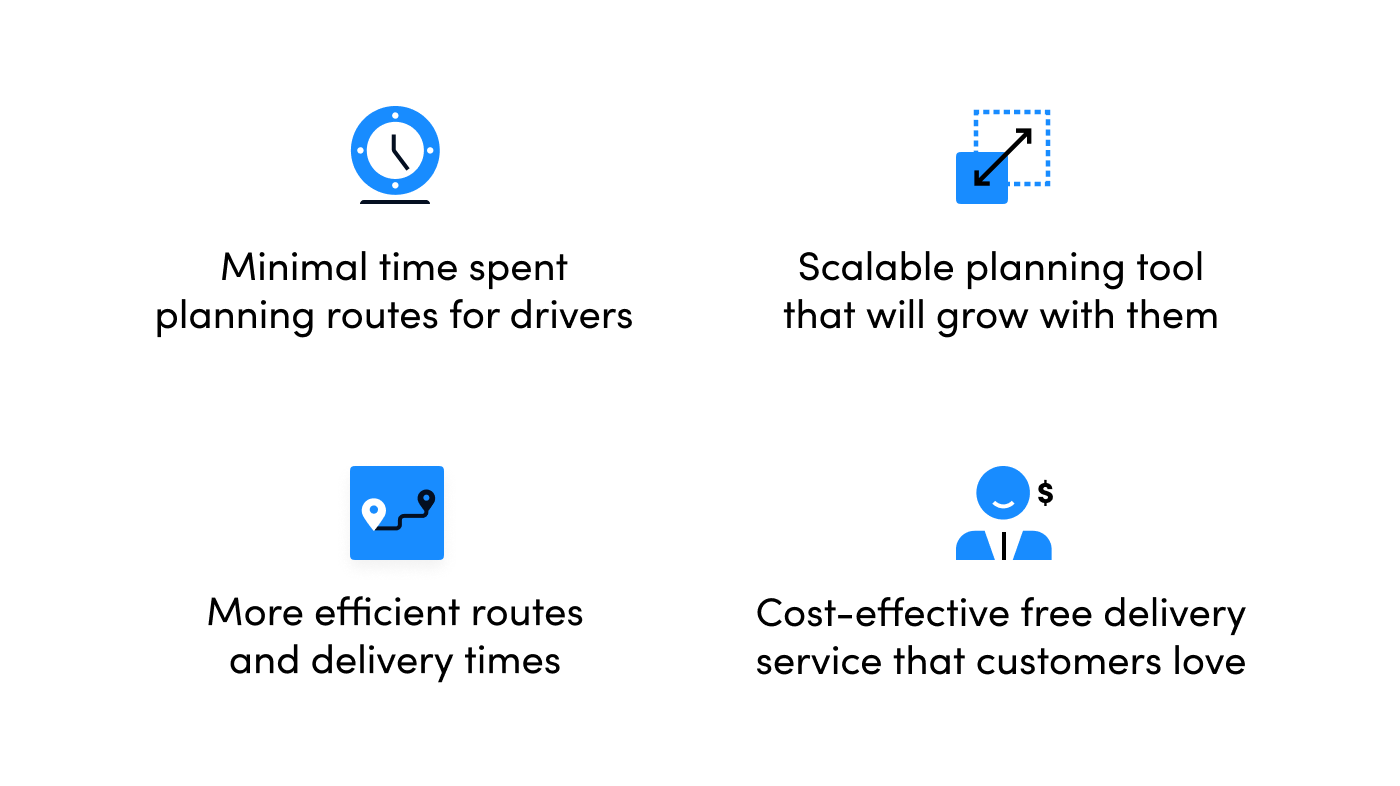
Improved delivery fleet productivity means more deliveries with less unnecessary downtime.

“For a company that is brand new to in-house deliveries, OptimoRoute’s fast and easy route planning is an incredible tool.”
Last Mile Delivery FAQ
Below, we answer some of the most frequently asked questions about last mile delivery and related topics.
What industries have to deal with last mile logistics?
Last mile logistics is an important part of any industry that involves selling products directly to consumers, from food delivery, like PostMates, Delivery Hero, Amazon Fresh, to e-commerce retailers.
Other relevant industries:
- Third-party logistics (3PL) and mail carriers like DHL, FedEx, UPS, USPS.
- Non-emergency medical transportation (NEMT) businesses
- Pharmacies
- Department stores
Where does last mile delivery fit in the order process?
Last mile delivery is the final logistics stage in the order process. It takes place after the products have been received, placed in the warehouse, sorted, picked, packed, and shipped to the appropriate distribution centers.
Last-mile delivery is all about shipping the products from delivery hubs directly to the customer’s door.
To learn more about the process of order fulfilment, read our post on outbound logistics.
What can every business can learn from Amazon about last mile delivery?
Amazon is living proof that 99% of the delivery experience comes down to speed and timely deliveries. Over 101 million Americans are Amazon Prime subscribers, paying a yearly subscription for faster delivery on all their orders.
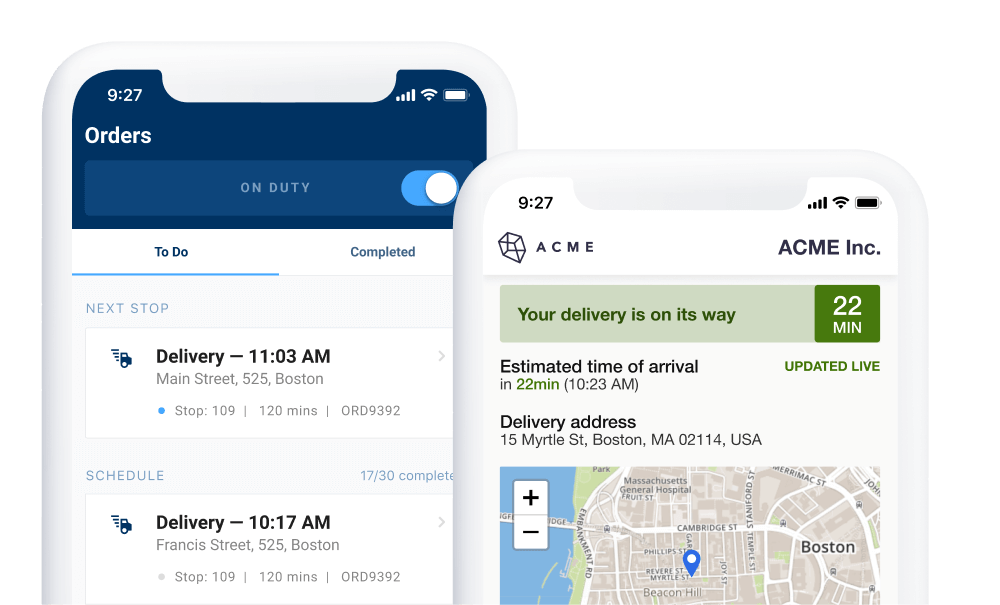
Reduce your operational costs by 30%
Increase delivery capacity by 43%
Plan 7x faster
Whether you rely on in-house drivers, crowdsourced delivery, or couriers doesn’t matter. You need an efficient process with enough distribution centers to meet consumer demands for fast delivery times.
Final Thoughts
Hopefully, this guide has given you a better understanding of what the last mile delivery problem is and the cost and impact it can have on your business.
Delivering packages on time to the right address is essential to maintain a happy customer base (being able to track packages can help too). By optimizing your process, you can also minimize failed deliveries, reduce mileage, and improve your company’s scalability.
Mastering last mile delivery is a necessity for any online retailer or delivery business in 2020.
To see how route optimization can transform your last mile delivery efficiency, test OptimoRoute for free for 30 days.
Try OptimoRoute™ for Free
No installation or credit card required

